Angkor Wat, this very name evokes the exotic temples lost in the jungle. For most tourists, it is the main reason for visiting Cambodia. Angkor Wat is a huge temple complex, which occupies many square kilometres in each direction, and is surrounded by several other groups of temples lost in the jungle a bit further away.
Angkor Wat strictly speaking is the name of the huge temple in the middle of the complex, however by all means there are many more temples to see. For example the temple city of Angkor Thom is to the North of Angkor Wat and includes a number of temples all united by a single wall. Taken together these temples are even more impressive than Angkor Wat itself.
Like many ancient Khmer temples, Angkor Wat represented Mount Meru, the centre of the world, where the gods lived, according to Hindu myths. Only gods had the privilege of living in stone edifices, therefore only the temples remain of the Khmers’ imperial capital – the kings’ palaces and other buildings were built of wood, and nothing remains.
From the practical point Angkor Wat really is lost in the jungle. The distance from Phnom Penh by bus is around 6-7 hours, and due to the constant flow of tourist a village Siem Reap close to Angkor Wat has by now grown to be second biggest city in Cambodia. The city has all the tourist infrastructure, even an international airport, thus in principle it is possible to fly here from Bangkok or Phnom Penh. From Siem Reap to Angkor Wat it is around 7 kilometres.
The traditional tour of Angkor Wat starts before dawn (i.e. around 5 in the morning). At that hour in looks like this (note the other tourist’s camera, of which there are endless numbers of all directions even at that hour in the hot season):

A more classic view of Angkor Wat at dawn:

This is the view from the inside, from the third (highest) level. Here one can see the huge walled perimeter surrounding Angkor Wat, behind which there is also a rather broad moat. The temple itself symbolised Mount Meru, and the moat corresponded to the world ocean which surrounds the Mount. This photo shows the scale of Angkor Wat – the largest sacral building in the world. People in the middle are walking from the outer gate to the inner gate.

A cult building in an inner courtyard. It is technically called “a library”. Each courtyard contains several.

Another view from the third level (Holy of Holies) to the second level:

The walls of the corridors surrounding the second level are covered with bas-relief friezes. A fragment showing an ascetic teacher:

The entrance to the sacred city of Angkor Thom to the North of Angkor Wat. Both sides of the road are flanked with the sculptures of five-headed snakes-nagas. The bodies of snakes are held on the one side by the row of gods, and on the other side by the raw of daemons. At the height of the Khmer Empire, in IX-XII centuries, the population of Angkor Thom reached 1 million, making it the biggest city in the world. The population of London at the time was 50 thousand.

Today inside of Angkor Thom there is a wood hosting some monkeys:

The mesmerising temple of Bayon at the centre of Angkor Thom. The temple was built in a later period, when Hinduism as a state religion was gradually replaced by Buddhism. It is famous for having 216 images of boddhisattva Avalokiteshvara, representing endless compassion, on all four sides of each of its numerous towers. The faces though were modelled after the Khmer king Jayavarman VII who built the temple.

The various angles of images:
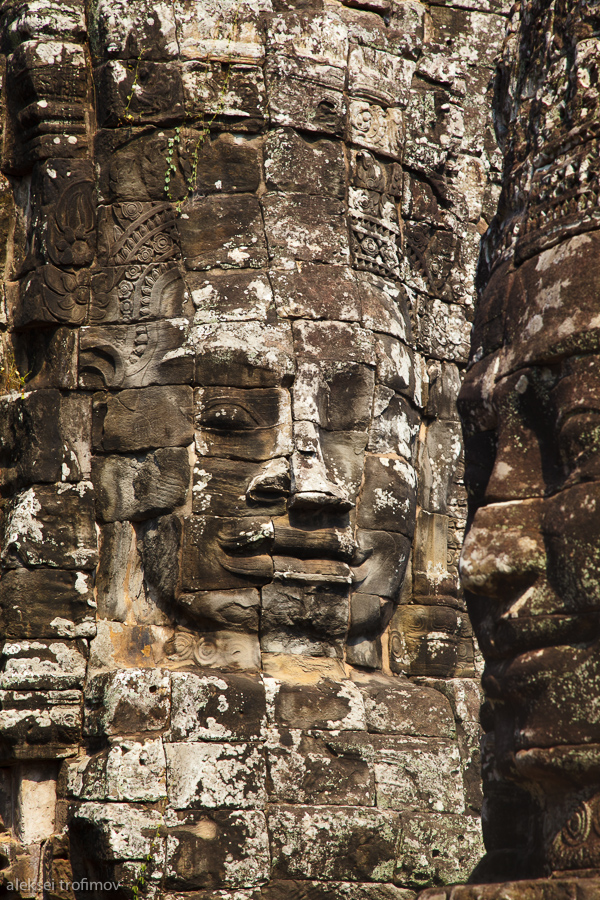
The temple of Ta Prohm was intentionally left under the control of the jungle, to remind the visitors of how the temples of Angkor Wat looked to the first European explorers who saw them in XIX century. The roots of banyan trees hugs the walls and manage to implant themselves inside the buildings:
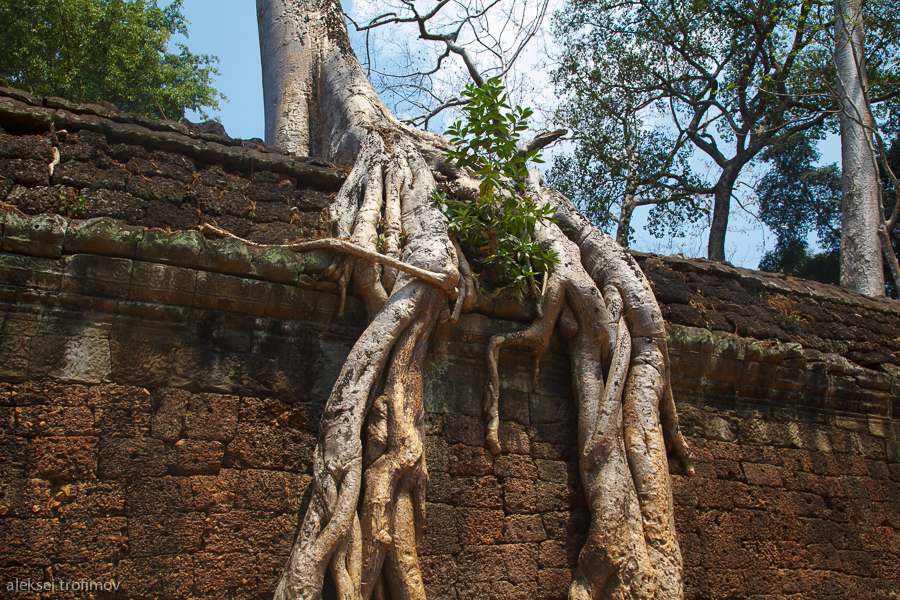
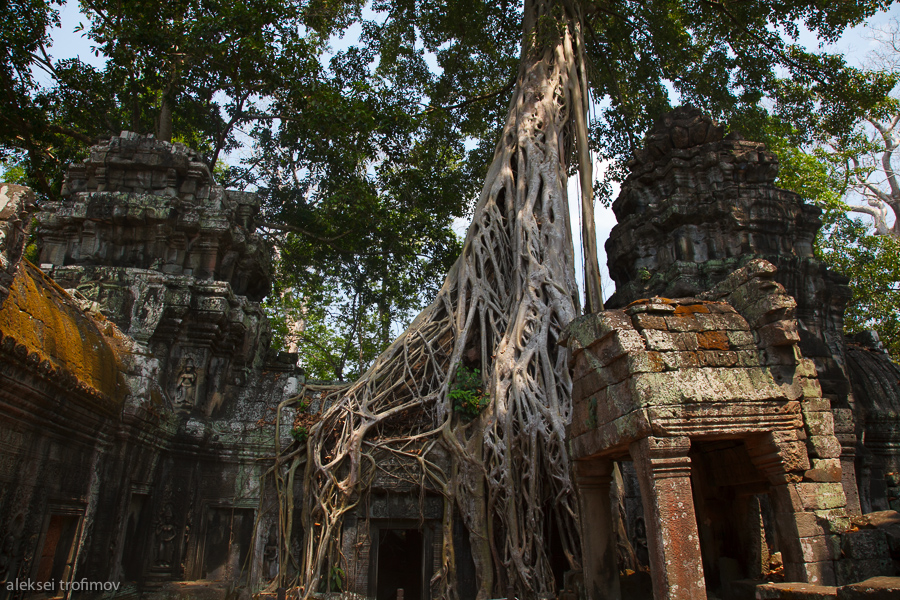
One needs at least three days to see all the main Angkor temples. The temples are divided into a Small Circuit (which includes the most famous temples), the Grand Circuit and the outlying temples which need a quite some time to get to. I had time to visit the Small Circuit and the Grand Circuit, i.e. 2 days. The first temple of the Grand Circuit, Preah Khan, which also looks like a scene from Indiana Jones:
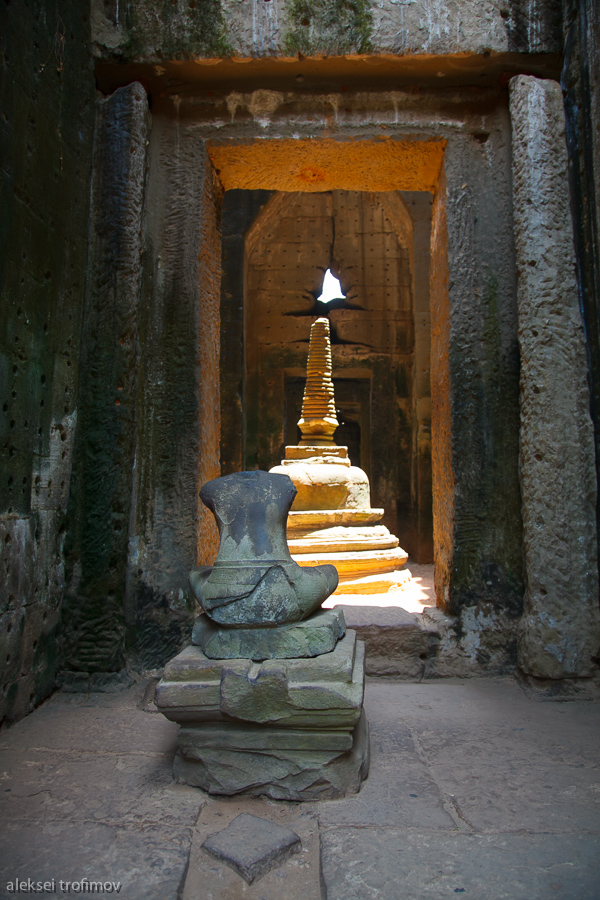


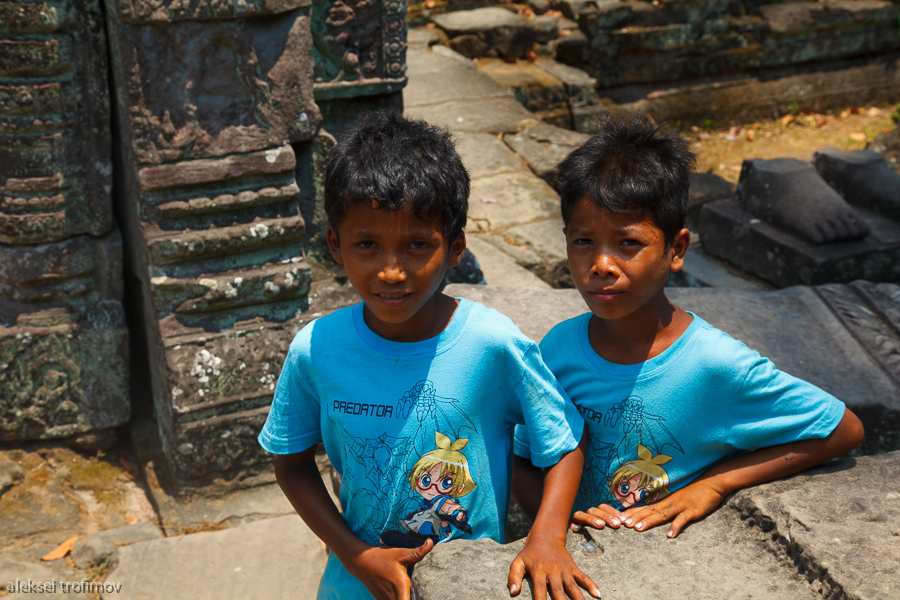
The gates of Ta Som temple:

Pre Rup temple in rays of the setting sun:
